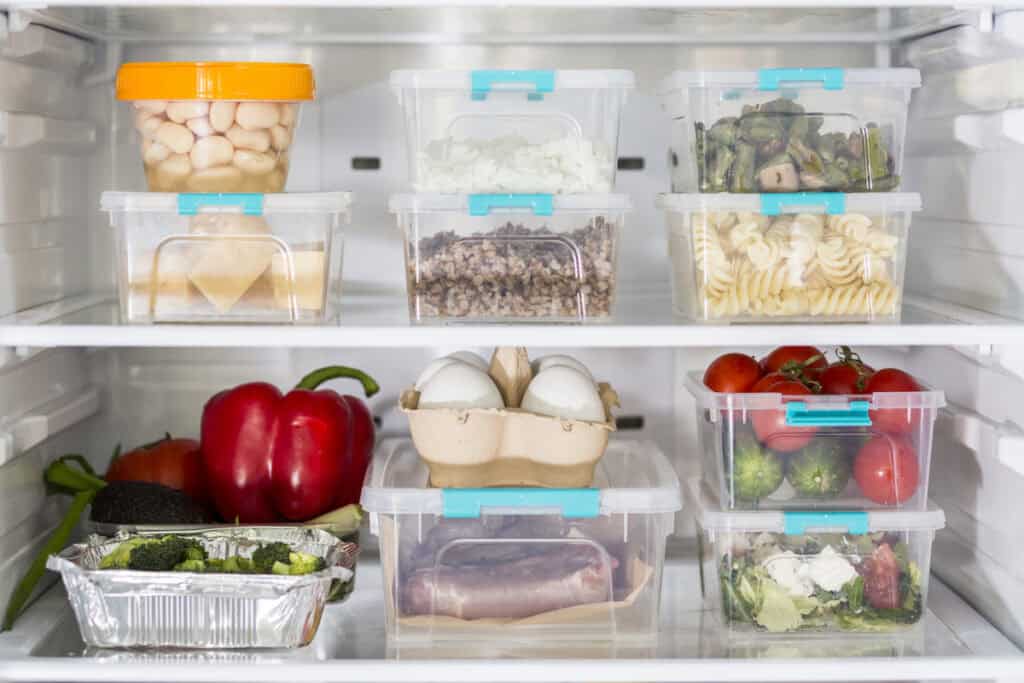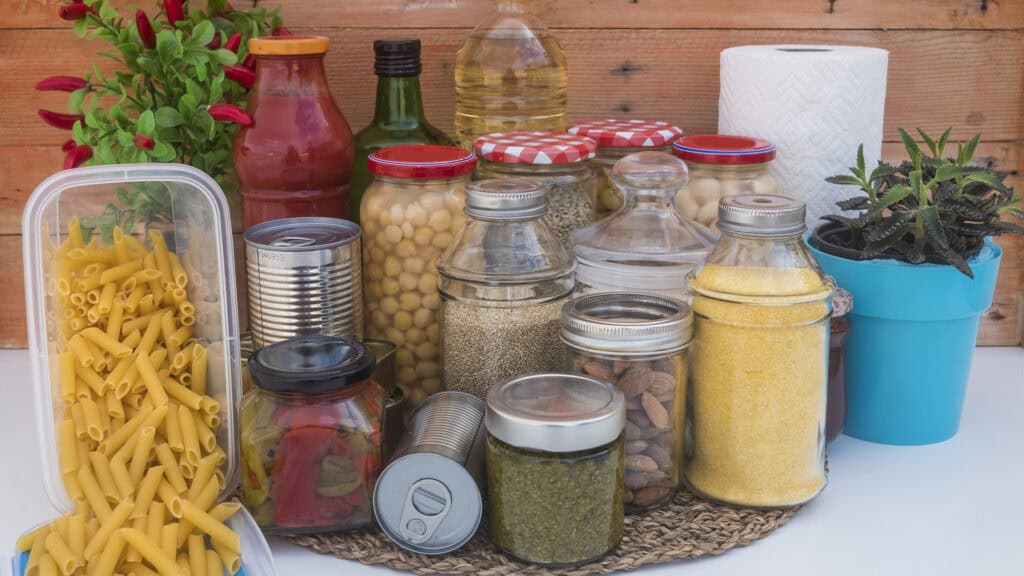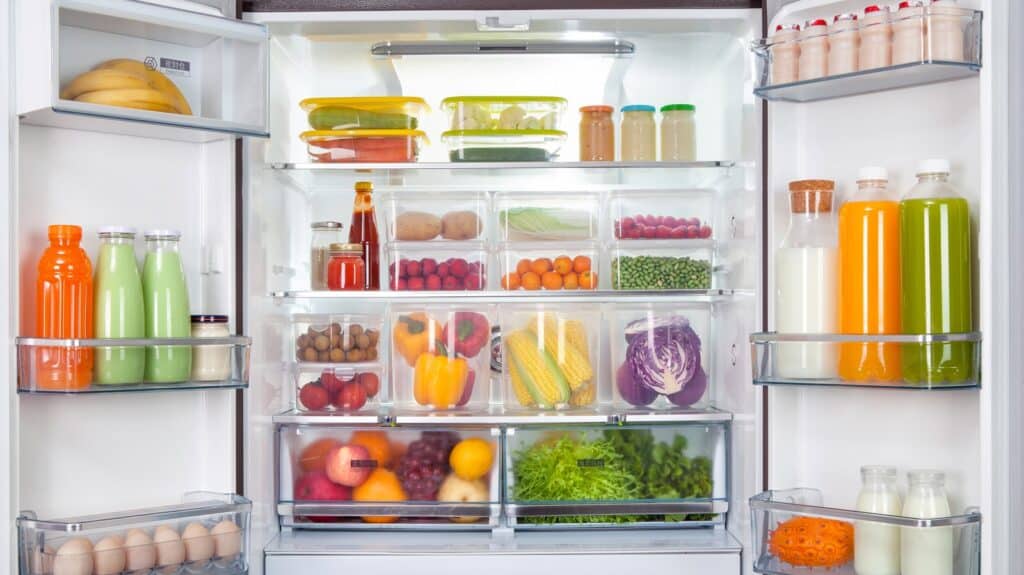Building An Efficient Long-Term Food Storage System

When it comes to building an efficient long-term food storage system, you need a strategy that balances preparation and practicality. Long-lasting supplies like canned goods contrast with perishable items, offering a mix that ensures sustenance during emergencies. Your goal is to create a stockpile that covers essentials while considering space and rotation needs. By organizing your storage with this balance in mind, you can optimize your resources for any situation that may arise. Stay tuned to discover tips and tricks for establishing a reliable long-term food storage system that meets your needs.
Planning Your Food Storage
Organize Efficiently
When planning your food storage, categorize items by type and expiration date to ensure easy rotation. Utilize clear containers for visibility.
Consider Shelf Life
Understand the shelf life of different food products to optimize your long-term food storage. Rotate items nearing expiration to maintain freshness.
Optimal Packaging
Choose appropriate packaging like cans, gallon buckets, or vacuum-sealed bags for dry goods. Ensure they are stored in a cool, dry place.
Moisture Control
Prevent spoilage by controlling moisture levels in your storage area. Use desiccants or moisture absorbers to maintain optimal conditions.
Rotation System
Implement a rotation system where you consume and replace items regularly to keep your pantry chat fresh and well-stocked.
Choosing the Right Foods
Selecting Diverse Options
When stocking your long-term food storage, choose a variety of foods to ensure balanced nutrition. Include grains, legumes, and beans as they are excellent sources of protein and fiber.
Opt for Quality Ingredients
Prioritize quality when selecting food products for long-term storage. Brown rice is a good candidate due to its extended shelf life and nutritional value. Ensure you have a wide variety of goods to meet different dietary needs.
Consider Nutrient-Rich Products
When deciding on what to store, opt for products that offer essential nutrients. Including a mix of dried fruits, nuts, and canned vegetables can be a great way to enhance the nutritional value of your stored foods.
Efficient Storage Techniques

Proper Organization
When storing food for the long term, ensure your storage area is well-organized. Categorize items by type and expiration date.
Maintaining a storage system that rotates older items to the front helps prevent food waste by ensuring timely consumption.
Ideal Temperature and Humidity Levels
Store your long-term food supplies in a cool, dry place to prevent energy loss through spoilage. Aim for temperatures around 50-70°F.
High humidity can lead to moisture buildup, causing ice crystals in frozen foods. Keep humidity levels below 15% for optimal term storage.
Packaging and Sealing Methods
Choose packaging materials that slow down the transmission of oxygen and moisture to extend the shelf life of your stored goods.
Vacuum sealing or using oxygen absorbers can effectively remove air from containers, reducing the chances of bacterial growth and maintaining freshness.
Managing and Rotating Stock
Efficient Organization
When stocking your long-term food supply, ensure efficient organization to easily access products. Categorize items by type.
Keep track of expiration dates to avoid waste and ensure you consume older products first. Rotate stock regularly.
Bulk Buying Benefits
Bulk buying saves money in the long run. Purchase staple items in bulk packages to reduce costs per unit.
Buying in bulk allows you to have a sufficient amount of food for an extended period, minimizing the need for frequent trips to the store.
Strategic Planning
Develop a strategic buying strategy based on your consumption patterns. Analyze how much you use certain items over time.
Plan purchases according to your needs and preferences, ensuring you have enough supplies for emergencies or unforeseen events.
Special Considerations for Dietary Needs
Infant Nutrition
When storing food for infants, ensure to prioritize items like formula, baby food, and nutrient-rich snacks. Properly label and date all stored infant food for safety.
Dietary Restrictions
For individuals with specific dietary needs, such as allergies or intolerances, separate storage areas can prevent cross-contamination. Rotate stock regularly to maintain freshness.
Grade-Specific Requirements
Consider the dietary needs of children when storing food for various grade levels. Elementary school students may require more snacks, while high schoolers might prefer quick, energy-boosting options.
When storing food long-term, it’s crucial to consider the diverse dietary requirements of your household members. For infants, focus on stocking up on essential items like formula and baby food. Individuals with dietary restrictions should have designated storage spaces to prevent any issues related to allergies or intolerances. Tailor your food storage based on the specific grade-level needs of children in your household. By understanding these considerations, you can create an efficient and tailored long-term food storage system that meets everyone’s dietary needs effectively.
Closing Thoughts
Now that you have a solid understanding of building an efficient long-term food storage system, it’s time to put your knowledge into action. Plan meticulously, choose wisely, store effectively, and manage your stock diligently. Remember that your efforts today will ensure a stable and reliable food source for the future.
Take the next step by implementing what you’ve learned. Start by creating a detailed plan, selecting the right foods, organizing your storage space efficiently, and establishing a routine for stock rotation. Your commitment to building a robust food storage system will provide you with peace of mind and security in times of need. Stay proactive and stay prepared!

Frequently Asked Questions
How do I start planning my food storage system?
To begin, assess your family’s dietary needs and preferences. Calculate the amount of food needed for an extended period. Create a list of essential items and storage requirements based on available space. Consider factors like shelf life, nutrition, and ease of preparation.
What are the key factors to consider when choosing foods for long-term storage?
Opt for non-perishable items with long shelf lives such as canned goods, dried fruits, grains, and dehydrated foods. Prioritize nutritious options rich in vitamins and minerals. Rotate through different food groups to maintain a balanced diet during emergencies.
What are some efficient storage techniques for long-term food preservation?
Utilize airtight containers, vacuum sealers, and mylar bags to prevent spoilage and extend shelf life. Store items in a cool, dry place away from sunlight. Consider using shelving units or storage bins to organize supplies effectively and maximize space utilization.
How should I manage and rotate stock in my long-term food storage system?
Implement a “first in, first out” system to ensure that older items are used before newer ones. Regularly check expiration dates and condition of stored foods. Keep an inventory log to track items and plan meals around existing stock to maintain freshness.
What special considerations should I keep in mind for dietary needs when setting up a long-term food storage system?
Take into account any allergies or dietary restrictions within your household when selecting food items. Stock up on alternative options for individuals with specific dietary requirements such as gluten-free, vegan, or diabetic-friendly products. Label all stored items clearly for easy identification.






